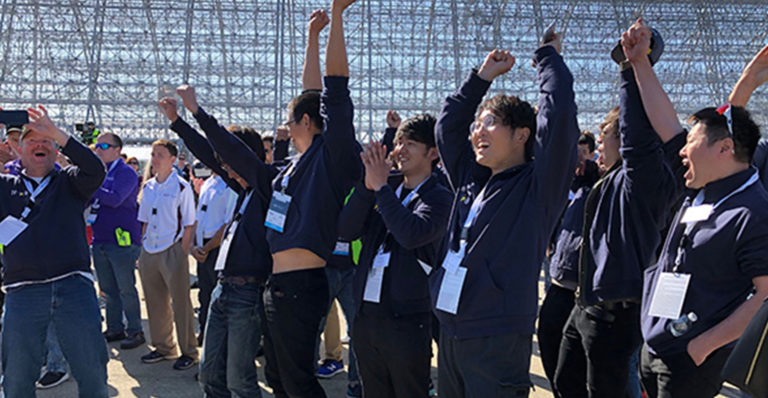What do Leonardo da Vinci, Orville, and Wilbur Wright, and Spanish engineer Juan de la Cierva have in common with fireworks? At first glance, one would say “nothing.”
But to Guillermo Villabrille, they mean everything; taken collectively, “they made my imagination fly!” Now, he is striving to actualize that imagination by participating in the GoFly Prize. He is captain of the Gyrobikers team, based in Spain.
For Guillermo, his enchantment with flight was launched at a fireworks show when he was a young boy. There, he noticed a wooden disk with rockets placed on the edge, which rotated very fast due to the reaction between the combustion of the gunpowder and the centrifugal force. Suddenly, the disk accidentally detached itself from the shaft that held it and “I was fascinated and very surprised with the way it was flying, with a straight and level flight so stable that it seemed that it would never end,” he vividly recalls. “I will never forget that moment.”
Nor will Guillermo ever forget the impact that his aviation ancestors have had on his life. “I have always admired Leonardo da Vinci, for his knowledge in all areas of science. I think that’s why I like to study nature from all possible points of view,” he notes. He also cites the Wright brothers, for being “pioneers and creating their own methodology to develop the aerodynamic profiles of their prototypes,” and Juan de la Cierva, the inventor of the Autogiro, a single rotor aircraft, because his ”great imagination and capacity for abstraction allowed him to foresee the advantages of autorotation in the safety of aircraft.” Indeed, as a child Guillermo would spend hours reading anything that spoke of this visionary trio.
Guillermo also cites as a life influencer the ancient Greek mathematician and physicist Archimedes, noting that when he first discovered his eponymous principle, “I felt something amazing: what we experience when we discover the secrets and mechanisms that explain us or make us understand the philosophy of nature. And one of the most beautiful and surprising branches you can devote to understand is the fluid mechanics and in particular aerodynamics.”
Nevertheless, it is another more current mathematician – the Russian Alexandre Kirillov – who most influenced Guillermo’s decision to participate in the GoFly Prize. He read a 2004 lecture that Kirillov gave at the American Mathematical Society, in which he compares the decision to becoming a scientist to catching a train traveling at full speed. Indeed, while you are learning well-known facts and theories, many new important achievements happen. So, Kirillov said, “you are always behind the present state of the science. The only way to overcome this obstacle is to ‘jump’, that is, to learn very quickly and thoroughly some relatively small domain and have only a general idea about all the rest.”
Guillermo has jumped in with both feet when it comes to his team’s Gyropack, its GoFly Prize entry. He explains that until now, all types of multirotor vehicle take-off and landing aircraft have been observed, in the form of single-person aircraft, hoverbikes, and aerial taxis. But unlike the gyroplane or the helicopter, in the event of engine failure or electrical failure VTOLs do not enter into autorotation to glide safely. With his device, he intends to demonstrate that in case of failure the device is safe and stable when it performs an autorotation maneuver, despite the small size of the disk.
To this end, Guillermo has already patented, together with the device, a system that “allows me to improve the windmill brake effect with respect to the gyroplane or helicopter, so that the circular wing with blades inside becomes a very effective rotary parachute. Our claim is the same as that of the entire aeronautical industry: That flying is increasingly safe and accessible to everyone.”
Think you have what it takes to create a personal flyer, win close to $2M, and change the world? There is still time to join the challenge here: https://www.herox.com/GoFly.








